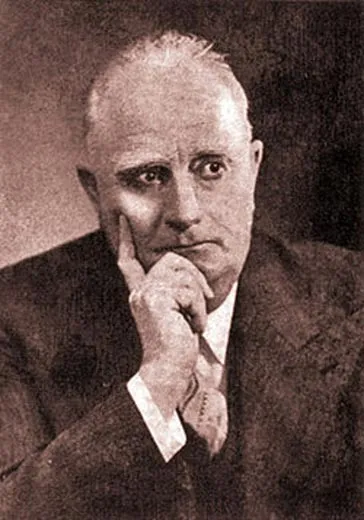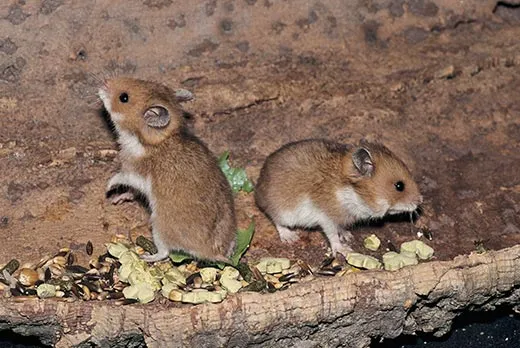The Untold Story of the Hamster, a.k.a Mr. Saddlebags
The hamster may be ubiquitous now, but it was a pioneering scientist who brought the rodent into labs and homes across the world
/https://tf-cmsv2-smithsonianmag-media.s3.amazonaws.com/filer/hamsters-631.jpg)
There are many ways to be immortal. Israel Aharoni, a Jewish biologist working in Turkish-controlled Jerusalem, imagined that his enduring legacy would come from giving Hebrew names to the animals of the Holy Land. Sometimes, especially for little-known animals, this meant making up new names. More often, it meant matching descriptions in the Torah with the species in and around Jerusalem. What, for example, was a rěēm? It is described as a clean animal with impressive horns that could cause injury. Aharoni thought it to be the aurochs, ancestor to all domesticated cows. This interpretation, like many others, seems to have stuck. But the Hebrew names of animals were not his only enduring legacy. He also captured a poorly known wild animal and in doing so changed our modern lives.
In the spring of 1930, Aharoni staged an expedition to the hills of Syria, near Aleppo, one of the oldest cities in the world. His quest was simple: he wanted to catch the rare golden mammal whose Arabic name translates roughly as “mister saddlebags.” On finding the animal he would either ally it with its Hebrew name in the Torah or, as seemed more likely, name it himself. But there was another motive. One of Aharoni’s colleagues, Saul Adler, thought that the animal might be similar enough to humans to serve as a lab animal in medical research, particularly for the study of the parasitic disease leishmaniasis, which was and still is common in the region.
The trip was full of challenges, among the most fundamental of which was Aharoni himself. While good at naming species, he was not good at traveling. He was, as a friend later told a scientist documenting Aharoni’s story, “a terrible coward,” who worried incessantly. He must have worried about transportation, about the weather and, above all, about being the least bit uncomfortable. And yet he was so curious—so full of a need to discover new things—that he pushed on.
Helping Aharoni on his odyssey was a local hunter named Georius Khalil Tah’an. He had seen Mr. Saddlebags before and would lead Aharoni to where it might be found again. Aharoni instructed Tah’an to ask any people they met along the way if they had seen the golden animal. Tah’an, like many paid guides to explorers, probably thought the mission ridiculous. But he obliged, one house at a time, day after day, in the quest for the animal with the silly name.
On April 12, 1930, fortune struck. Through a series of conversations, the men found a farm where the animal had been seen. Ecstatic, Aharoni, Tah’an and several laborers supplied by the local sheik followed the farmer to his fields. Tah’an and some villagers began to dig excitedly, eagerly, without regard for the farmer, who looked on in dismay at the dirt piling up on top of his young, green shafts of wheat. They dug eight feet down. Then from the dust of the earth they found a nest and in it, the animals. They were golden, furry and tiny—Mr. Saddlebags! Aharoni had found a mother and her pups, ten soft and young. Aharoni removed the animals from the farm and gave them the Hebrew name, oger. We now know them, in English, as the Syrian hamster or, because it is now the most common hamster in the world, simply the hamster.
Today, Syrian hamsters are nearly everywhere. A precise count is impossible. They are in classrooms, bedrooms and, as Aharoni envisioned, research labs. They scurry under refrigerators. They log thousands of collective miles on hamster wheels.
The Syrian hamsters Aharoni collected were the first to be studied in any great detail. But he wanted to do more than study them; he wanted to breed them so that hamsters could be used as laboratory animals. Another species of hamster was already being used for research in China, but they would not reproduce in captivity and so had to be collected again and again. Aharoni thought he would be luckier with the Syrian hamster, though just why he was so optimistic is unknown.
Aharoni took the hamsters back to his lab in Jerusalem. Or at least he took some of them. In the wheat field, the mother, upon being placed in a box, began to eat her babies. As Aharoni wrote in his memoir, “I saw the [mother] hamster harden her heart and sever with ugly cruelty the head of the pup that approached her most closely.” Tah’an responded by putting the mother in a cyanide jar to kill her so that she would not eat any more of the babies. In retrospect, killing the mother may have been imprudent because it left the infants alone, too small to feed themselves. Aharoni began with 11 hamsters, and just 9 made it back to Jerusalem, each of them defenseless. Their eyes were still closed.
The babies, fed with an eye-dropper, did well for a while, maybe too well. One night, when the mood around the lab had grown hopeful, five hamsters grew bold, chewed their way out of their wooden cage and were never found. Hein Ben-Menachen, Aharoni’s colleague who was caring for the hamsters, was overwhelmed by the incident. In Aharoni’s words, he was “aghast… smitten, shaken to the depths. . .” These hamsters were serious business.
Four hamsters remained. Then one of the male hamsters ate a female and so there were just three—two females and one suddenly large male. The odds were getting worse by the day, but Ben-Menachen, shamed but determined, would try. He separated the hamsters and made a special chamber filled with hay for the hamsters to breed in. He put a single female in the chamber and then—after she had found a quiet spot among the hay—introduced her only surviving brother. The brother chased his sister around and caught up with her. What happened next Ben-Menachen credited to God, who “nudged a single wheel of the uncountable wheels of nature—and a miracle happened”: the brother and sister hamsters mated.
From then on the hamsters would be fruitful and multiply. That single brother and sister gave rise to 150 offspring who begat even more until there were thousands and then tens of thousands, and finally the modern multitudes of hamsters. These hamsters colonized the world, one cage at a time. Some hamsters were smuggled out of Jerusalem in coat pockets. Others made it out in more conventional ways, in cages or packing boxes. They spread like the children of the first people from the Torah, Adam and Eve. And so it is that every domestic Syrian hamster on earth now descends from Aharoni’s first couple.
Hundreds, maybe thousands, of papers have been written about laboratory hamsters. They have been used to understand circadian rhythms, chemical communication and other aspects of basic mammal biology. But their greatest research impact has been in the context of medicine. Hamsters long served as one of the most important “guinea pigs” and helped build our understanding of human ailments and their treatments. Ironically, the success of hamsters in medical research is, in no small part, due to the specifics of Aharoni’s story. Because hamsters are inbred, they suffer congenital heart disorders (dilated cardiomyopathy in particular). Heart disease is nearly as common in domestic hamsters as it is in humans. It is this particular form of dying that has made them useful animal models for our own heart disease. Perhaps more so than any other species, they die like we die and for that reason they are likely to continue to be used in labs to help us understand ourselves.
Understanding the hamsters, on the other hand, has proven more difficult. The wild populations of hamsters remain relatively unstudied. Aharoni published a paper on what he saw in 1930—the depth of the burrow, the local conditions, what the hamsters were seen eating. Observations of Syrian hamsters in the wild have been rare: one expedition in 1981, one in 1997, another in 1999, but little progress has been made. Wild Syrian hamsters have never been found outside of agricultural fields. And even in the fields, they are not common. They are found only in one small part of Syria and nowhere else. Where is or was their wilderness? Maybe there is a faraway place where they run among the tall grasses like the antelope on the plains, but maybe not. Maybe the hamsters’ ancestors abandoned their pre-agricultural niche for the wheat fields around Aleppo, where wheat has been grown for as long as wheat has been grown anywhere. Or maybe the wheat itself displaced the habitat the hamsters once used. We don’t know, but we could. All it would take would be for someone, you perhaps, to go to Syria and look; in other words, to stage a new expedition for Mr. Saddlebags.
In the end, domestic hamsters are Aharoni’s legacy. Maybe this is how he had intended to live on all along, immortal everywhere that a hamster lives in a cage. When they squeak and run, they do so in his image. And so next time your hamster tries to escape, think of Aharoni, but don’t think too long, because as he would tell you, hamsters are wily and fast.

